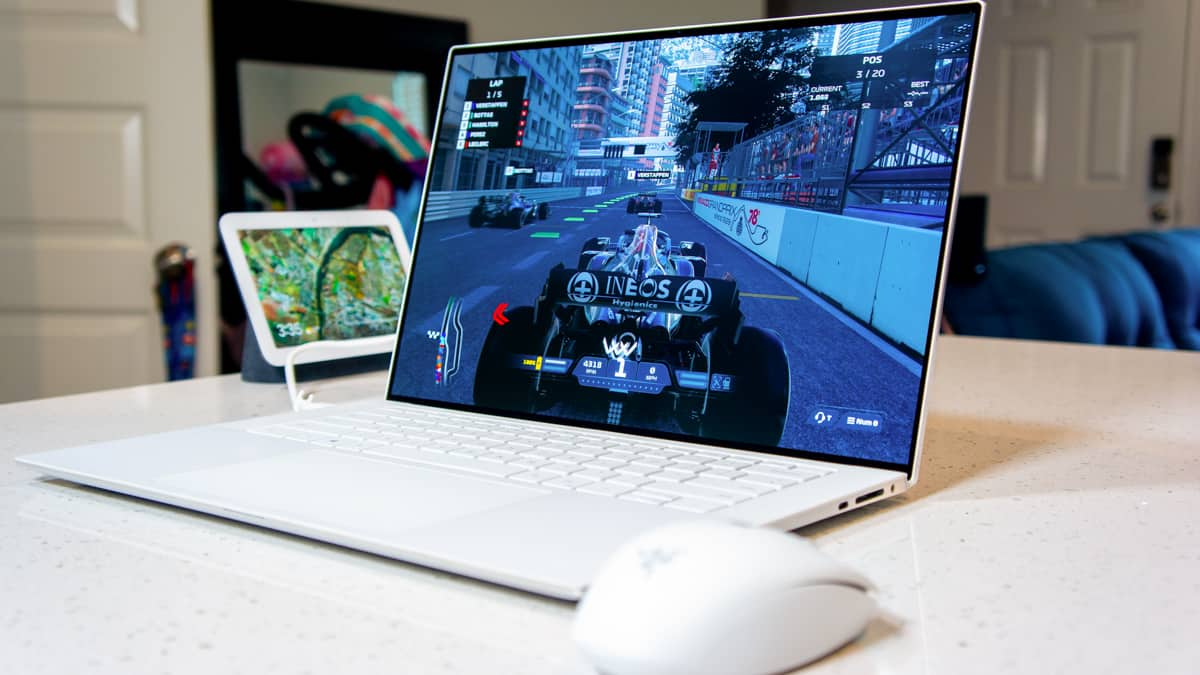Advertiser Disclosure: At Slickdeals, we work hard to find the best deals. Some products in our articles are from partners who may provide us with compensation, but this doesn’t change our opinions. Our editors strive to ensure that the information in this article is accurate as of the date published, but please keep in mind that offers can change. We encourage you to verify all terms and conditions of any product before you apply.
Reading Time: 6 minutesThe Dell XPS is one of those laptops that you don’t know you want until you lay hands on it. I recently reviewed the newly redesigned Dell Inspiron 16 Plus, the latest entry in Dell’s more affordable ‘mainstream’ line of laptops. In that review, I said that the Inspiron is now so good that it led me to question the value of the more ‘premium’ XPS line.
I stand by that notion, but as I unfold the top of the latest XPS 15 for the first time, it still succeeds in smacking me right in the envy gland. Every time I review an XPS I wonder if it’s time to finally escape the shackles of my longstanding MacBook Pro, and this time was no different.
The wonderful new OLED display, the thin bezels, the carbon fiber palm rests, and that unapologetically huge touchpad come together to make this a special laptop before you even talk about the processors packed away inside. And those just happen to have been upgraded, too!
So while I still think you should take a long, hard look at the new Inspiron before you buy an XPS, if you’re a display enthusiast or someone who just wants to live your best life, here’s a few reasons why you might still shell out for Dell’s premium device.
Dell XPS 15 Technical Specifications
- 11th Gen Intel Core i7 11800H (up to 4.6GHz)
- 15.6 inch OLED display (3456 x 2160)
- HDR support, 400 Nits peak brightness
- 100,000:1 contrast ratio, 100% DCI-P3 color
- 16GB DDR4 RAM (3200MHz)
- 512 GB NVMe SSD
- Nvidia Geforce RTX 3050 Ti (45W)
- Arctic white carbon fiber palm rests
- Ports: 2x Thunderbolt 4 (USB-C), 1x USB-C with PD and DisplayPort, full size SD slot
- 6-Cell Battery, 86WHr
The OLED Returns
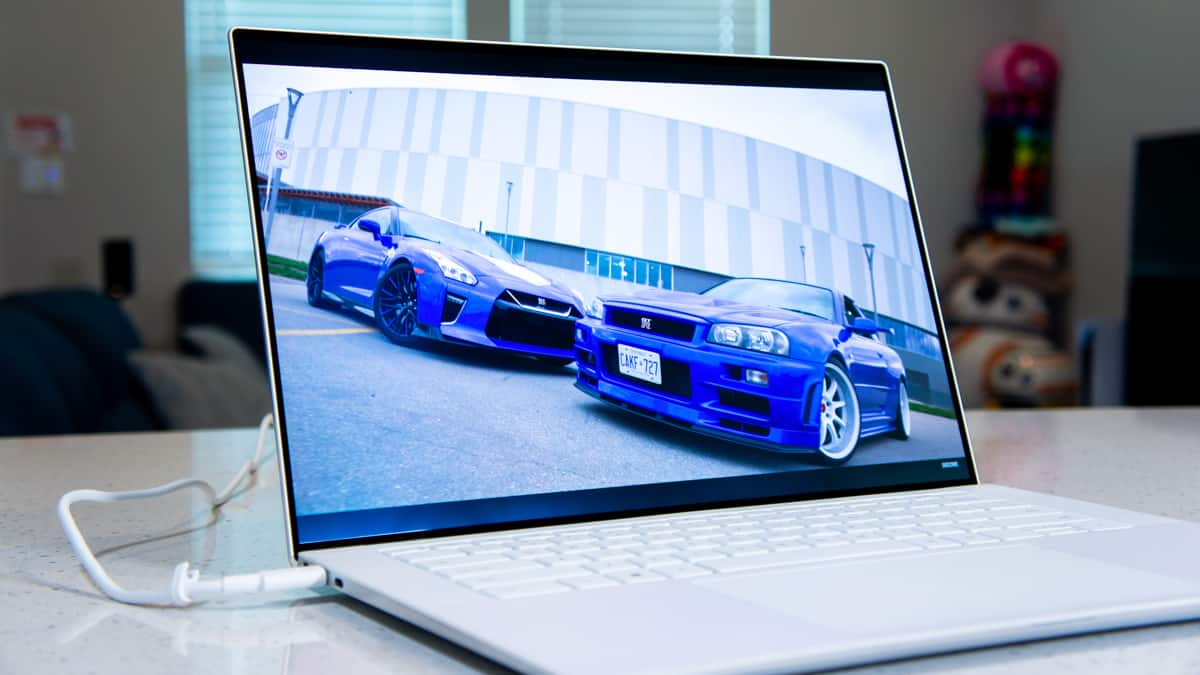
Credit: Slickdeals
There’s a lot to like about the new XPS 15, but it’s that damn display that gets you. No matter what screen option you choose, if you’re buying an XPS in 2021, you’re getting a bright, punchy display with colors so vivid it can be startling.
But what makes the new 2021 update special is the reintroduction of the OLED display option that was first seen in 2019, but sadly omitted from the lineup in 2020. For the uninformed, getting an OLED display means you will be treated to near limitless contrast (100,000:1). This means super bright and pitch-black tones can be displayed at the same time without one having any adverse effect on the other (no washed out blacks, and no dulled highlights).
Color accuracy is also high, at 100% DCI-P3. And this means that the OLED display included in our test unit looks great at all times, from casual YouTube viewing to web browsing. It’s also arguably the best choice for content creators, who can rely on the screen to deliver an accurate image in any situation.
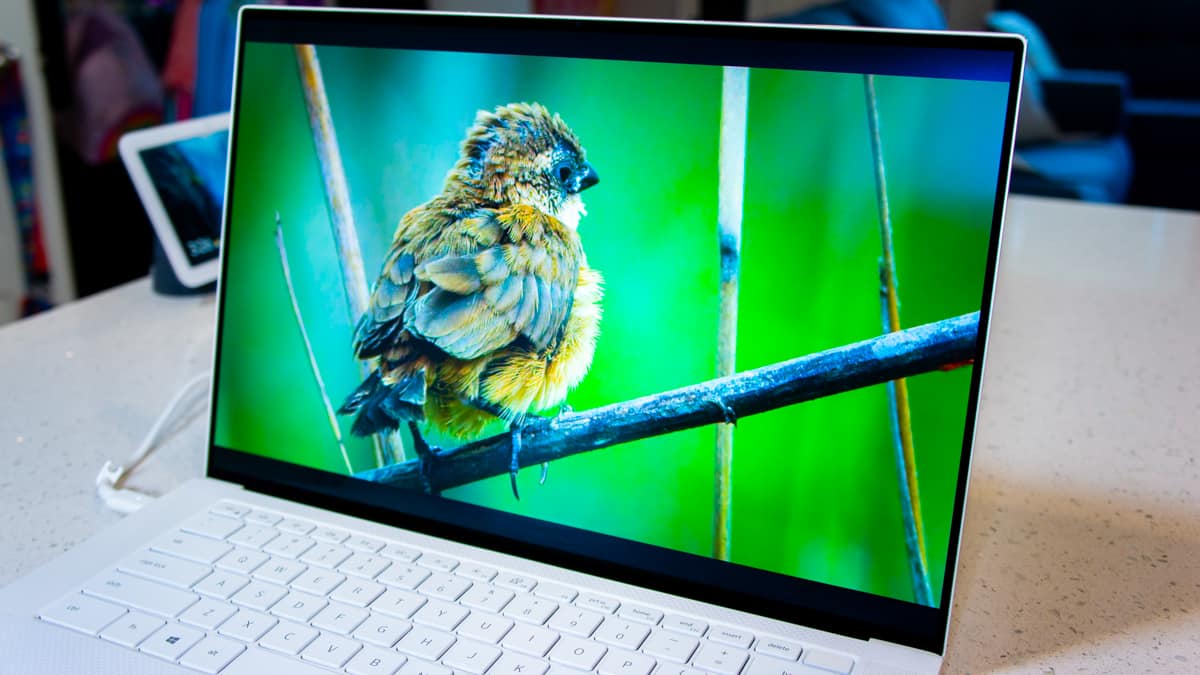
Credit: Slickdeals
The almost-but-not-quite-4K resolution of 3456 x 2160 is nevertheless pin sharp in use, especially when viewing full 4K content. And the 16:10 aspect ratio, which makes the screen taller than typical 16:9 laptops, helps make this 15-inch laptop one of the smallest, while also delivering an extended vertical view of documents or web pages.
With the only tangible caveat of the OLED being a slight dip in peak brightness versus the LCD options (400 nits down from 500 nits), the OLED is likely to be a popular choice among those who can stomach the near $400 upgrade cost over the base screen.
And despite the lower brightness, the OLED still manages to come to life when viewing HDR content, such as an HDR movie or video game. Playing DOOM Eternal on the XPS was impressive enough to have me pondering a monitor upgrade for my gaming PC.
More Power for Work or Play
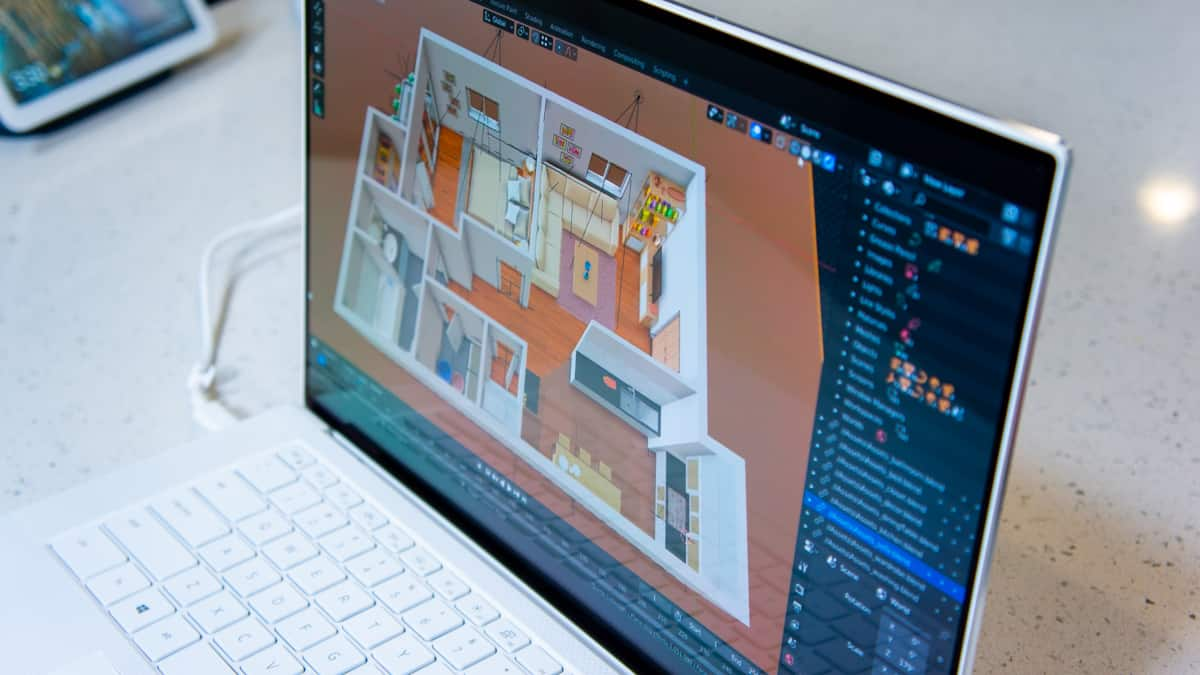
Credit: Slickdeals
Gaming is, thankfully, far more viable on the new XPS 15 versus last year’s model. That’s thanks to a major upgrade to its graphics. The NVIDIA Geforce RTX 3050 Ti graphics card is not just faster than the old GTX 1650 Ti; it introduces support for a host of cutting-edge features, including hardware accelerated AI, ray tracing graphics and DLSS upscaling.
This massively benefits those who do 3D rendering work like AutoCAD, or any other productivity that offloads tasks to the GPU (in particular, AI tasks that take advantage of the new Tensor Cores found only in RTX GPUs). It also sees games get significant boosts to frame rates and visual fidelity.
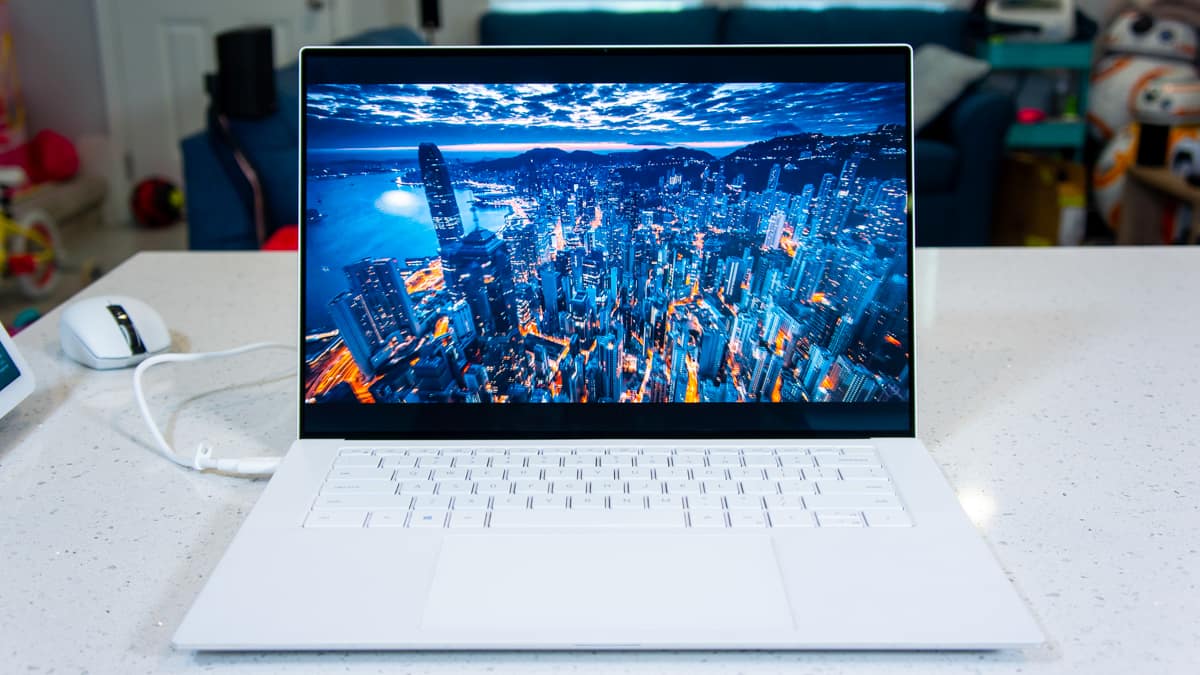
Credit: Slickdeals
The XPS is able to run DOOM Eternal and F1 2021 on high settings between 80 and 90fps, which is great for a laptop that’s not intended for playing games. But more importantly, it can lock to a perfectly smooth 60fps in most modern games at 1080p resolution with V-Sync turned on.
There are, however, some limitations that stop it from being a full-blown gaming laptop. Its 4GB VRAM pool is small by modern standards, forcing some concessions in graphics settings. Also, the RTX 3050 Ti in the XPS is a lower-spec 45W version, which limits its performance versus 75W versions found in dedicated gaming laptops. But this is a necessary sacrifice in the interest of maintaining cooler running temps and the XPS’s super slim profile. So don’t buy the XPS just to play games — it’s an excellent productivity laptop that also plays games very well.
A Meaningful Evolution, but not Quite Revolutionary Yet
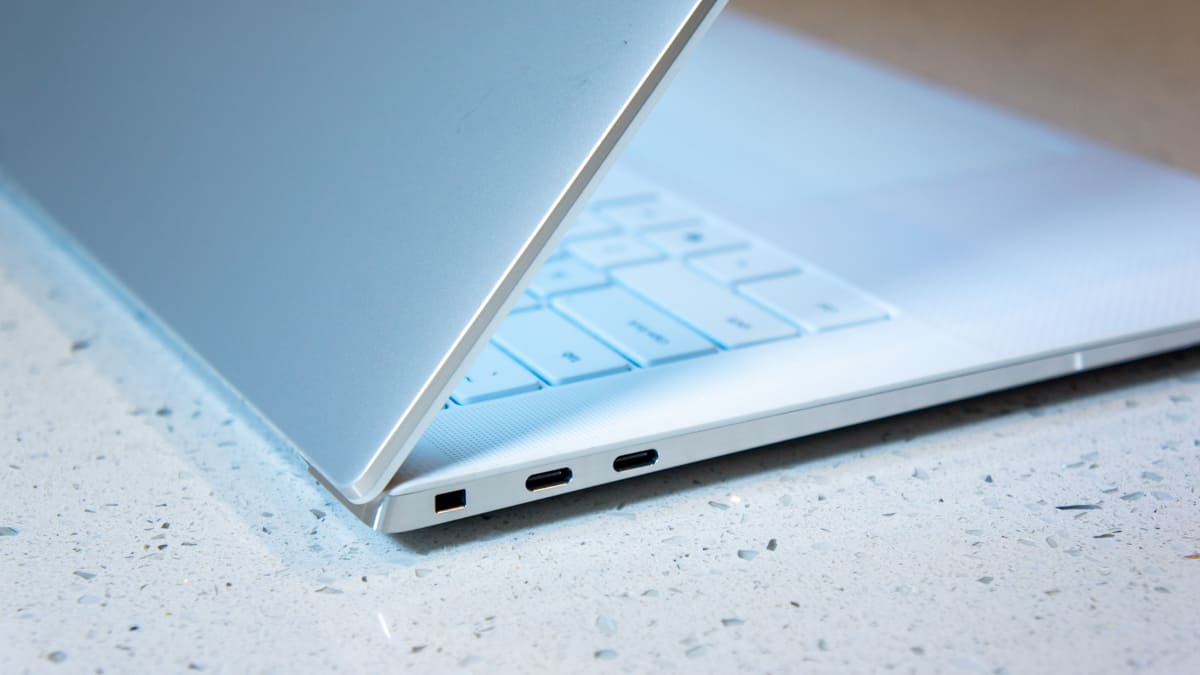
Credit: Slickdeals
While the graphics represent a generational leap over previous models, other improvements are more subtle. Faster RAM and an upgrade from 10th to 11th-gen Intel CPUs bring welcome — if only marginal — gains to overall speed and performance. SSD storage can be spec’ed up to 4TB, double that of last year. But since RAM and SSDs are user-upgradeable, it’s arguably better to go with a lower spec and upgrade later for less money.
Meanwhile, two of the three USB-C ports now support Thunderbolt 4 for a significant boost to transfer speeds. These line up next to a full size SD card slot and headphone aux port carried over from previous models.
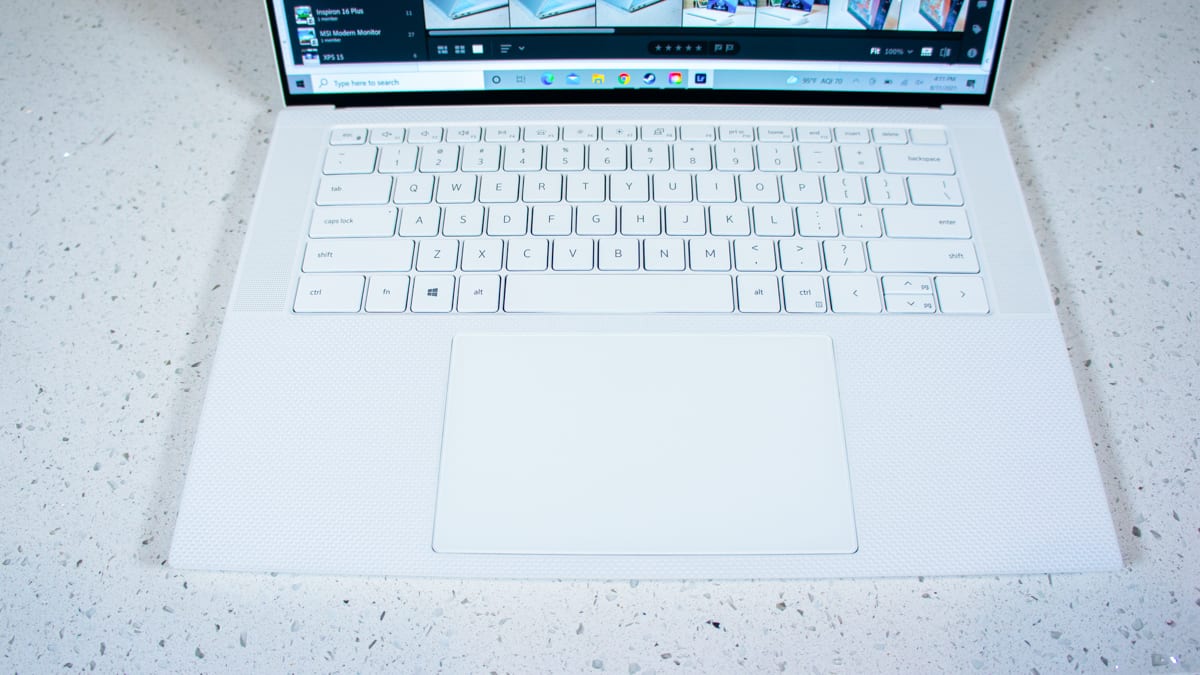
Credit: Slickdeals
The same amazing keyboard and touchpad remain, along with the iconic white carbon fiber palm rests that make the XPS one of the best-looking (and feeling) Windows laptops available.
On-board audio hardware remains unchanged, but that’s no bad thing since the quad array of two subs and two tweeters make for some of the deepest, fullest sound I’ve ever heard out of a laptop. The battery is also the same as previous models, delivering roughly five to six hours of normal use in my experience (and much less if you play a game).
Unfortunately, the webcam and mic still leave a lot to be desired, with grainy video and poor voice audio. This is no doubt the unfortunate side-effect of having such thin bezels, but hopefully this can be improved in future models.
Should You Buy the Dell XPS 15?
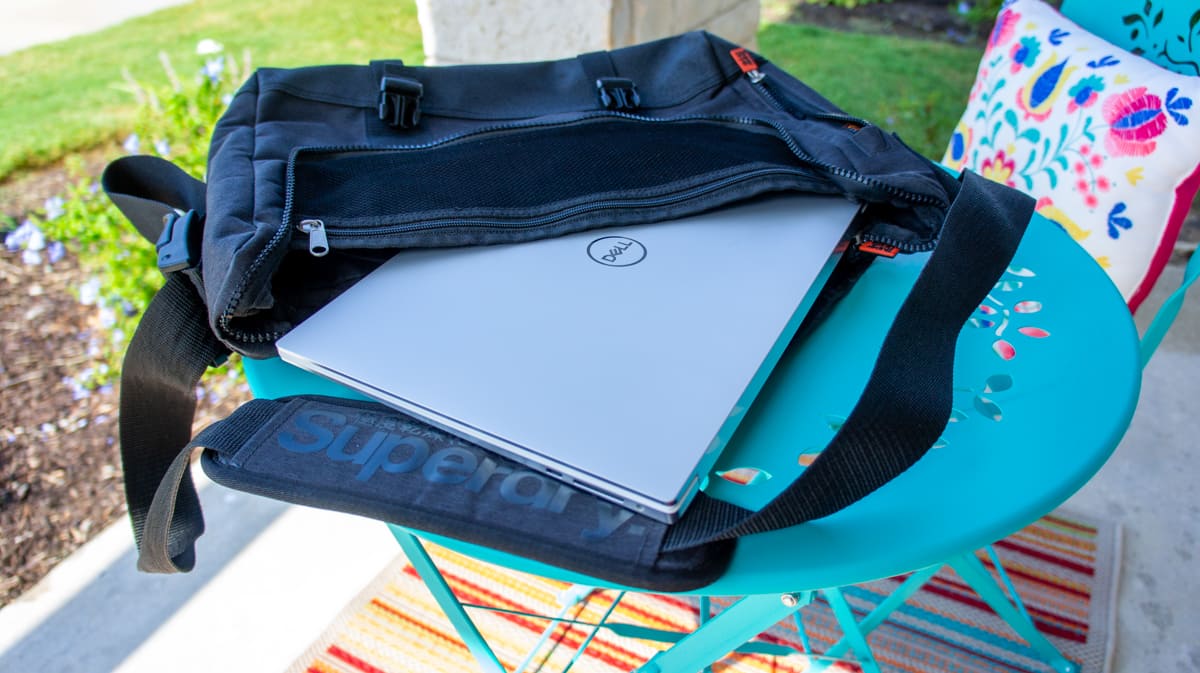
Credit: Slickdeals
With the reintroduction of the OLED screen and a significant boost to graphics, the new XPS 15 reasserts itself as the ultimate productivity laptop in Dell’s portfolio, even in the face of the now vastly improved Inspiron.
These features help make sure that the XPS isn’t simply ‘premium’ in form, but in function, too. This is a laptop for content creators and productivity professionals that require the very best in display tech and portability. It helps that the XPS is also still drop-dead gorgeous.
But if you’re less concerned about the nuances of display performance, you can get near identical performance out of the new Inspiron which, I promise, is far nicer than you may remember from Inspirons of old.
Let us help you keep an eye out for new deals and sales. Just set a custom Deal Alert and we’ll let you know whenever a new deal drops so you never miss out on a sale. Additionally, check out our Dell Coupons page for all the ways to save at Dell.
Up Next:




